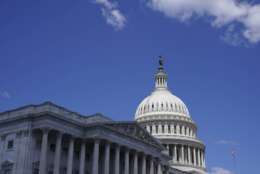Commentary
-
Government agencies are increasingly turning to Centers of Excellence (CoE) to deploy intelligent automation in an effort to enhance core internal processes and drive operational and workforce efficiency gains.
August 18, 2023 -
While the PFWA is a good step in the right direction, we must continue to build on that work. Given the current lack of economic stability for so many families, workplace protections for caregiving workers will be essential to keep families safe, fed and housed and, in the long term, to achieve true equality in the workplace.
August 16, 2023 -
Currently, paradoxes in the MAS contract negotiation process and procedures are creating significant, contradictory and unnecessary hurdles for contracting officers seeking to negotiate “fair and reasonable” pricing. In turn, contractors, including small business contractors, are seeing impacts regarding their access to the federal market and opportunities to compete for customer agency requirements.
August 14, 2023 -
It’s a daunting task to prepare for emergency response to the growing number of impactful events like these. However, tested and proven solutions like GEO satellites, combined with the new LEO satellites and other emerging technologies developed by the communications industry, offer useful options for government agencies to help overcome the communications barriers facing first responders in the wake of these events.
August 11, 2023 -
Michael Gifford, a senior strategist for CivicActions, highlights key questions that agencies should pay close attention to in the new 508 assessment criteria to improve accessibility of technology for citizens and employees alike.
August 09, 2023 -
Michael Gifford, a senior strategist for CivicActions, explains why the new 508 assessment criteria will help agencies improve accessibility of technology for citizens and government employees alike.
August 08, 2023 -
Alma Lee, the president of the American Federation of Government Employees National VA Council, explains why the contract with the Veterans Affairs Department reverses years of frustrations.
August 07, 2023 -
Maybe Ron DeSantis knew what he meant to say, but gosh, his throat-slit comment was way off the mark.
August 07, 2023 -
Prioritizing cybersecurity from the start makes fundamental shifts like reallocating cyber roles and responsibilities manageable. The National Cybersecurity Strategy is ambitious and comprehensive, but it is critical that agencies meet these guidelines and help secure our software, data and national security.
August 04, 2023 -
As Navy ships near the end of each deployment cycle, crews plan and prepare for maintenance and scheduled system and compartment modernization that can’t be performed underway. These tasks require accurate, up-to-date data on each…
August 03, 2023 -
Implementing Congress’ directives won’t be easy for some agencies, because those directives come in addition to normal duties like allocating and fulfilling other congressional priorities for national defense, border security, farm insurance requests, Social Security payments and Medicare reimbursements.
August 02, 2023 -
It’s no secret that there is a universal staffing problem across the federal sector — critical positions remain unfilled, agencies are having a hard time attracting and retaining talent, as well as developing that talent,…
August 01, 2023 -
Accelerated by a White House executive order on diversity, equity, inclusion and accessibility (DEIA), many federal agencies are fast-tracking a relatively new C-suite role: the chief diversity officer.
July 31, 2023 -
National Whistleblower Day must be honored across the United States. It is important to step back and remember what whistleblowers have achieved and how they have served the public interest year after year.
July 28, 2023 -
Something as simple as using automation to eliminate manual and repetitive compliance-based tasks from employees’ day-to-day can free up resources for higher-value activities.
July 27, 2023














